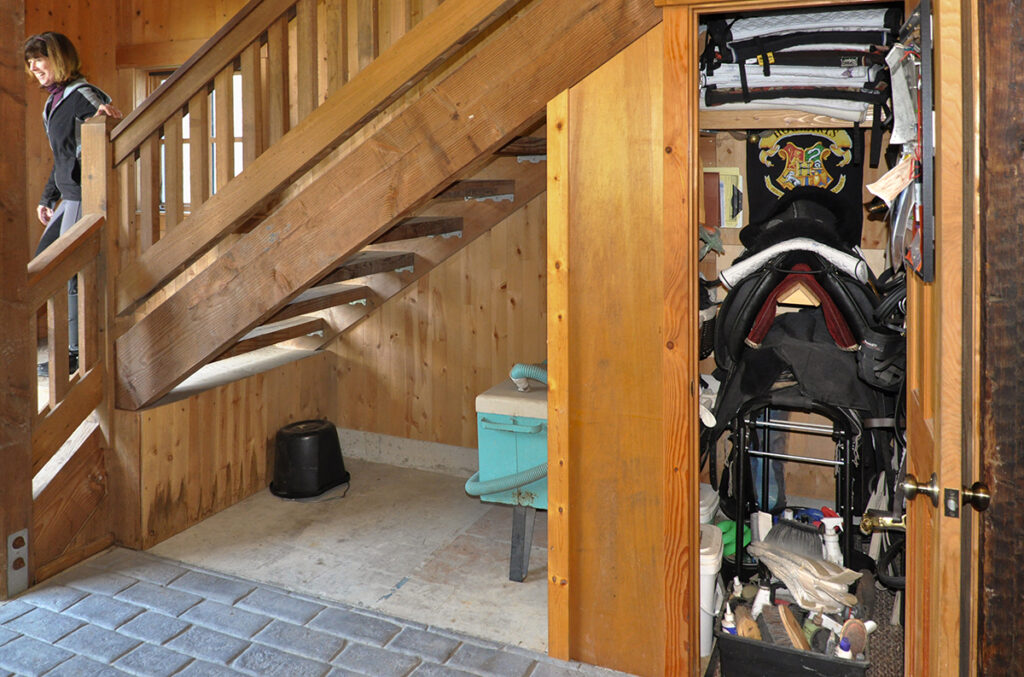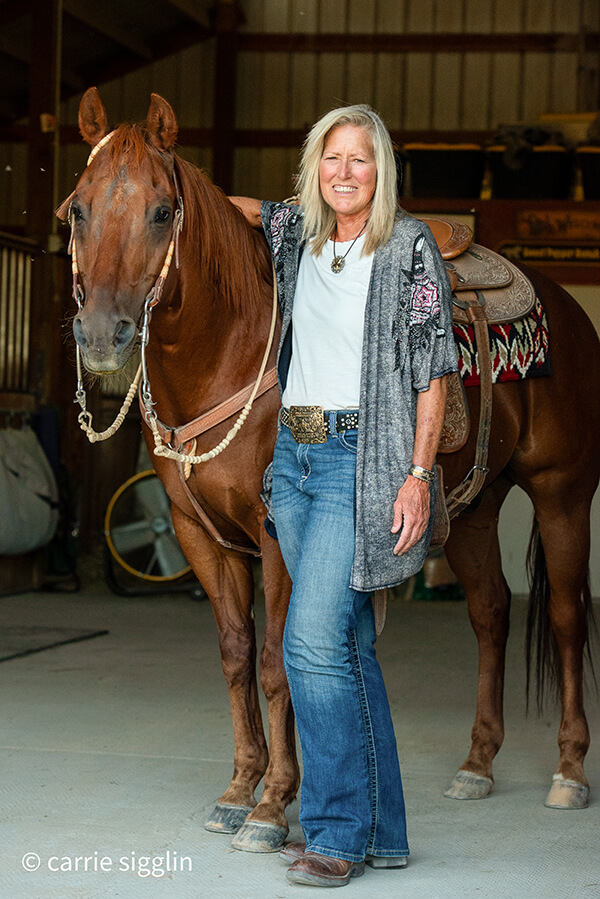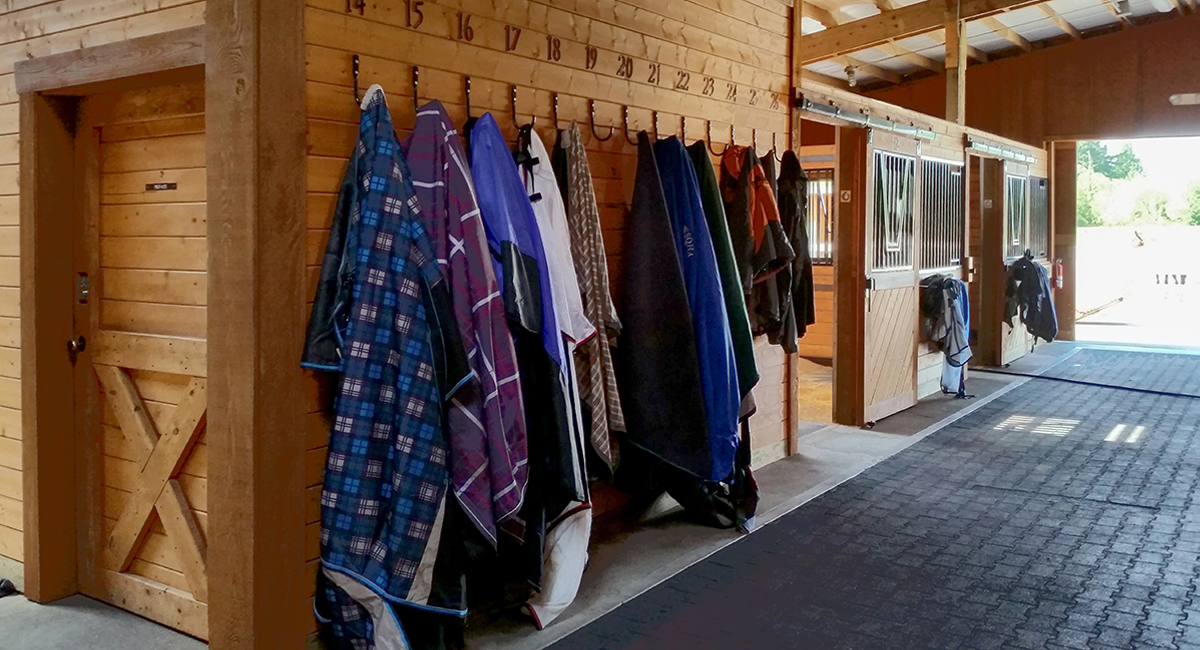Keeping Barns Organized and Clutter-Free Aids Safety and Sanity
Norma Stein has ridden and owned horses for over 50 years. She started out in hunters and transitioned to eventing, eventually spending most of her years in dressage. Now she thinks of herself as “a retired dressage rider who trail rides Western.” Over the years Stein has kept her horses on her own property and boarded at boarding facilities. She has worked as a barn manager and a groom for trainers. Thinking back on her years of experience, Stein shares some tips and ideas for making storage in a horse barn work.
Tack Room Ideas

“If you’re building a barn or setting up a facility to be a boarding barn you should think about storage,” Stein begins. “Probably the most vital storage need is where boarders will keep their tack and equipment.” Consider whether you will use individual tack lockers or if boarders will provide their own tack trunk. “Some places even have a separate building or place to put trunks or materials.”
“So much depends on what discipline you are doing,” Stein reflects. “If it’s a show barn versus a trail riding barn the needs are going to be quite different as well as the tack which will need to be stored.”
“I think lockers are ideal for storage. You have a confined area which keeps individuals from spreading out and overtaking their neighbor,” she explains. Lockers can be conveniently designed and built with saddle and bridle racks in them.
“A lot of facilities have numbered areas that correspond with their stall number,” shares Stein. “If your stall is number 5, then in the tack room your locker is number 5, saddle rack is number 5, and bridle rack is 5.”
“If you have an open room [for everyone to store their equipment] then it’s just a free-for-all. One person can end up with half a room, and another person ends up with a little corner.” A room set up with bridle racks, saddle racks, and lockers that are all numbered means no clutter, and everyone has the same amount of space.
“Other places I’ve seen without a tack room have purchased a Tuff Shed or some type of large storage shed-type structure and made that into a tack room,” Stein adds.
Blankets
“Blanket storage is perhaps the hardest part,” reflects Stein. “They (horse blankets) are so big and take up a lot of room. I think the best way is having hooks on walls, with numbers corresponding to the stall. You can have two blanket hooks per stall, or one hook with a second blanket kept on a stall door rack.”
“One barn I was at had a drying room for blankets,” comments Stein. A drying room is a heated room where you can hang wet blankets to dry. “Rooms like these are a luxury, but in a wet climate you might think about adding one.”
Feed Rooms
“Everyone is going to have supplements for their horse,” says Stein. “I’ve been at places where you keep your supplements attached to the stall door in some sort of Tupperware container with a lid and bagged supplements are inside and fed daily by the barn staff.”
“You can also have a feed room with individual labeled drawers for the supplements,” she adds. “Then the person feeding somehow needs to know what supplements go with what other grain or concentrate. Most importantly, things need to be organized so that the right supplements get to the correct horse.”
Barn Manager Decisions
“A lot of what a barn manager does depends on how wide the barn’s aisles are. A narrow barn aisle won’t have room for tack trunks sitting in front of stalls,” Stein adds.
“The barn manager is also in charge of keeping things clean. Some places take everything out of a feed room regularly and sweep it out.” Keeping things clean and clear is part of fire safety and rodent control. “A person needs to be able to walk into and through a tack room and walk horses down an aisleway without obstructions.” In the end, these decisions are up to the barn manager who must inform boarders of limits and shared spaces.
Time spent thoughtfully laying out storage space is a wise investment. Whether you are running a boarding facility or just trying to keep your own barn organized and clutter free, use these tips to make barn-life easier.
Check out the Horses for Clean Water website for information on upcoming events, online classes, private consultations, tip sheets, and other resources for horse keeping and land management. Visit the Sweet Pepper Ranch website for info on our horse motel or glamping tent.
See this article in the November 2024 Online Digital Edition:
November 2024

Alayne Blickle began in the 1990’s as a pioneer in water conservation and natural resources conservation by creating the entrepreneurial consulting business, Horses for Clean Water, an award-winning internationally acclaimed education program that looks for horse-healthy, nature-based solutions to land management challenges. She continues this work today partnering with agencies, organizations, and horse owners throughout North America and worldwide. She is a regularly contributing writer and photojournalist to several equine publications.
Alayne lives with her horse trainer husband, Matt Livengood, in southwestern Idaho where they raise and train AQHA horses and mustangs on their eco-friendly horse ranch. Contact her through the Horses for Clean Water website or through their ranch website Sweet Pepper Ranch.
For more information contact Alayne at [email protected] or 206-909-0225.






